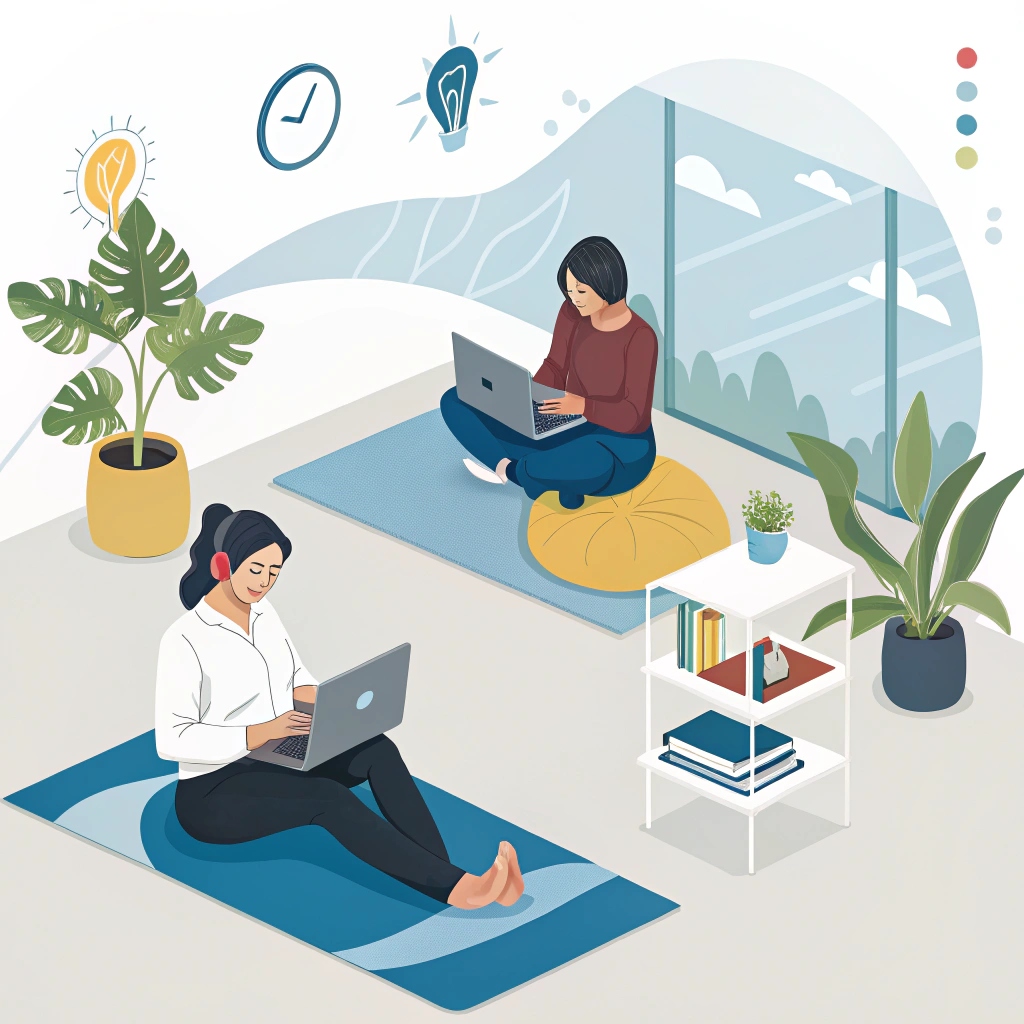
In the race to digitize, automate, and optimize, organizations have leaned heavily on technology to unlock productivity. Workflows are faster. Communication is instant. Collaboration is global. And yet, amid this evolution lies a quieter crisis: the erosion of employee wellbeing.
At CorporateOne, we believe it’s time to reframe the conversation around technology—not just as a driver of efficiency, but as a foundation for sustainable, human-centered work. We must ask: Can technology support performance and protect people? Can innovation be designed to nurture, not drain?
The answer, we believe, is yes—but only if we choose to build that way.
Let’s face it: the modern workday is always “on.”
Slack messages ping after dinner. Emails arrive at midnight. Virtual meetings blur into one another, often with no buffer or breath. What once felt like liberation from rigid office walls has become a tether—one that’s always buzzing.
The data paints a stark picture:
These numbers aren’t just stats. They’re signals. Signals that our systems—though well-intentioned—are over-optimized for speed, and under-designed for sanity.
Technology itself is neutral. It’s how we design it, deploy it, and embed it into culture that makes all the difference.
Take notifications, for instance. In theory, they keep us informed. In practice, they fragment focus and create constant micro-stressors. Or consider the growing number of productivity dashboards—meant to give visibility, but often interpreted as surveillance.
These unintended consequences emerge when we chase efficiency without considering human capacity.
At CorporateOne, we advocate for thoughtful, intentional tech design—solutions built not just for KPIs, but for energy, clarity, and psychological safety.
Here’s what it means to build technology—and workplace ecosystems—that prioritize wellbeing alongside performance:
Digital tools should help workers disconnect, not just connect. That means:
At CorporateOne, our internal tools promote tech-free windows, encouraging employees to engage in deep work—or simply rest—without digital noise.
The modern knowledge worker interacts with dozens of platforms a day. Context switching is not just inefficient—it’s exhausting.
Solutions:
We’ve reimagined internal dashboards at CorporateOne to surface only the most critical information—turning complexity into calm.
Productivity doesn’t require presence. It requires trust and clarity.
When tech is designed for asynchronous work, it empowers people to:
This flexibility is especially important in hybrid and remote-first environments, where blurred boundaries can lead to emotional exhaustion.
Even the best-designed tools can’t thrive in a culture that glorifies hustle, urgency, and burnout. That’s why human-centered tech must be paired with human-centered leadership.
At CorporateOne, we approach wellbeing as a strategic priority, not a side perk. Our initiatives include:
In short, we treat wellbeing as a design challenge, not just an HR initiative.
Traditional productivity metrics often miss the mark. Lines of code, hours online, messages sent—none of these capture sustainable performance.
Instead, we’re investing in:
Technology allows us to measure these signals in real time—and more importantly, to act on them.
This isn’t just the right thing to do. It’s also good business.
Organizations that embed wellbeing into their technology and culture see:
And perhaps most crucially, resilience—because in times of change, the healthiest systems are the most adaptive.
If you’re a designer, developer, manager, or executive reading this, consider the following questions:
The answers matter. Because the future of work depends not just on what we build, but on how we build it.
We’re proud to be part of a growing movement that reimagines workplace technology through the lens of wellbeing. From platform design to policy development, every decision we make is grounded in one belief:
People aren’t resources—they’re the reason.
So we’ll keep asking the hard questions. Listening deeply. And designing boldly.
Because when you build systems that protect people, you don’t just prevent burnout—you unlock brilliance.
Explore how CorporateOne is designing healthier digital workspaces at www.corporate.one.
Or connect with our team—we’re always open to co-creating the future of work.
